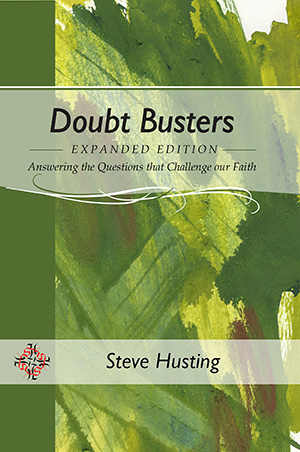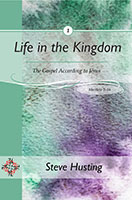The resurrection of Jesus Christ from the dead is central to the Christian message. Without it, Christianity would be just another religion. What makes the case so compelling for belief? Here are several ideas to consider.
God knew how hard it would be for us to believe someone could rise from the dead, so he told us throughout the Old Testament that he will raise a particular person at a particular time. Those passages, called prophecies, tell us that Jesus would be in the ground only three days and that his body would not decompose (Acts 2:24-32). It tells us that Jesus would die with pierced hands and feet, foreshadowing the torture of the cross (Psalm 22:16), a method of capital punishment which had not been in existence at the time of the prophecy.
Resurrection was not a fluke occurrence, but planned. Jesus himself spoke to his followers about dying and rising from the dead. They did not understand what he meant, for they had supposed the Messiah of whom God prophesied would live forever. His resurrection was not a secret, for Jesus shared it repeatedly to his disciples. Jesus used his resurrection as a sign that his ministry and words would be vindicated. If he had not risen from the dead, he would be just another good man among historical figures who told people to live a good life. Because he did rise from the dead, his message has startling urgency.
God had a reason for Jesus’ death and resurrection. God had established a means through which his people, the Israelites, could be “cleansed” of their sins, and by which his holy presence could remain in their midst: he instituted animal sacrifices. When a person sinned, he would come to the priest with an animal specified in the law, such as a lamb, place his hands on the animal, and thus transfer his sins to the substitute, then kill the sacrifice. The sinner would see with his own eyes that the animal bore the penalty of death for what the sinner had done. This institution of animal sacrifices looked forward to the sacrifice of Jesus, who became the Lamb of God on the cross, suffering in our place. In Isaiah 53, we see ahead of time Jesus’ substitutionary sacrifice fully revealed. Jesus was the ultimate sacrifice who died for the sins of the whole world. Jesus died so that we would not have to suffer sin’s punishment in the next life. His death rendered all subsequent animal sacrifices superfluous.
Many people reject the message of the resurrection simply because they do not believe the Bible. However, the resurrection is not a religious issue. It is a historical issue. It occurred in a particular time and place, with particular people impacted by the event. The early Christians lived and died for witnessing to a singular event – the resurrection of Jesus Christ. They did not stand for a particular morality or ethics, but a person who was raised up from the dead.
Jesus’ enemies acknowledged that he had indeed died and had been buried in a tomb. They requested of Pilate “that the tomb be made secure until the third day, lest His disciples come by night and steal Him away, and say to the people, ‘He has risen from the dead.’ So the last deception will be worse than the first” (Matthew 27:64b).
When Jesus died, his followers took down his body from the cross and prepared his body for burial. They had plenty of opportunity to ascertain his condition.
The resurrection of Jesus was central to early evangelistic preaching, and, predictably, it was not readily believed. “And when they heard of the resurrection of the dead, some mocked, while others said, ‘We will hear you again on this matter'” (Acts 17:32). The stories that follow Jesus’ death and resurrection credibly relate the believers’ and unbelievers’ conflict over the message. All the encounters had the ring of truth.
Jesus’ resurrection appearance dramatically changed the disciple’s lives. Immediately after Jesus’ death and before his resurrection, they were cowering in an upper room “for fear of the Jews” (John 20:19b). Within days of his miraculous bodily appearance to them, they were standing boldly in the face of opposition, confirming that this “This Jesus God has raised, up, of which we are all witnesses” (Acts 2:32). “Therefore let all the house of Israel know assuredly that God has made this Jesus, whom you crucified, both Lord and Christ” (Acts. 2:36).
No attempt was made by the enemies of the disciples to prove that Jesus’ death and subsequent appearances were a hoax. They presented no evidences to disprove his miracles or the miracles of his disciples. Instead, the leaders attacked the followers themselves and sought to stop their message. The witnesses were so numerous that Paul the apostle, in writing to the Corinthians, noted that many of the five hundred who saw Christ’s post-resurrected appearances were still alive at his writing to confirm or deny the gospel (1 Corinthians 15:6). Christ’s death, burial, and resurrection were historically attested to. Historians have more evidences for the death and burial of Jesus than for any other ancient historical character.
Consider that the Jews have been keeping the Sabbath, wearing the yarmulke, being circumcised, meeting in synagogues, and keeping other practices for thousands of years. Even when persecution scattered them throughout the world, they kept their traditions. The fear of violence and living in foreign lands far from their homeland did not stop their practices. Yet something happened two thousand years ago, at the time of Jesus, that changed their practices. In a short period, the Jews had abandoned the yarmulke, circumcision, and animal sacrifices – something that violence and death had not been able to change for thousands of years.8
What Do You Think?
a. Why should it seem incredible that a God of miracles would use a miracle to get our attention and prove his handiwork?
b. Would the Bible make more sense when you see it as God laying the foundation for the resurrection? Jesus refers to this when he said, “‘O foolish ones, and slow of heart to believe in all that the prophets have spoken! Ought not the Christ to have suffered these things and to enter into His glory?’ And beginning at Moses and all the Prophets, He expounded to them in all the Scriptures the things concerning Himself” (Luke 24:25-27). God told us ahead of time what he was going to do. The resurrection is easier to believe when you compare the detailed prophecies with the actual events – events that were not to occur for hundreds of years to come.
c. Did you know that the Bible records the expressions of disbelief on the disciples’ part regarding the resurrection of Jesus? “And their words seemed to them like idle tales, and they did not believe them” (Luke 24:11). The Bible addresses the difficulty head-on, then leaves us with a promise: “Blessed are those who have not seen and yet have believed” (John 20:29b).
8. Strobel, Lee, The Case For Christ. (Zondervan, Grand Rapids, 1998.)






